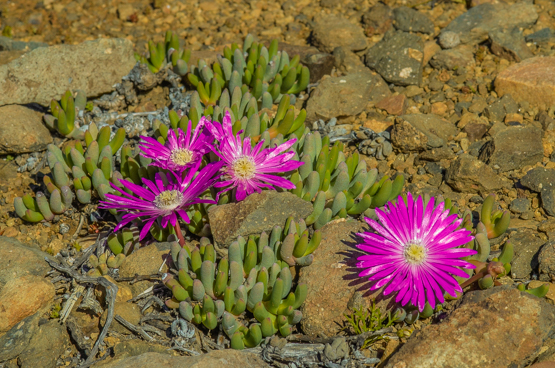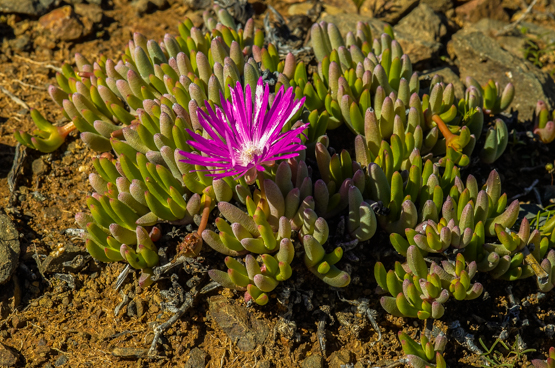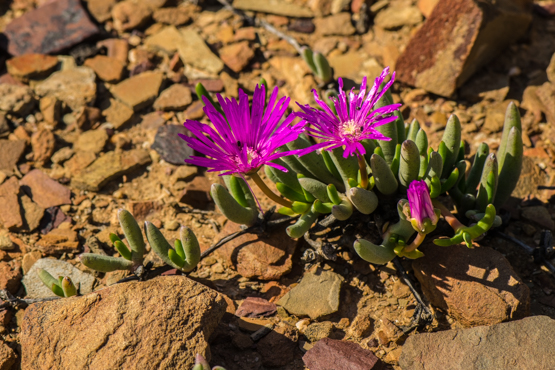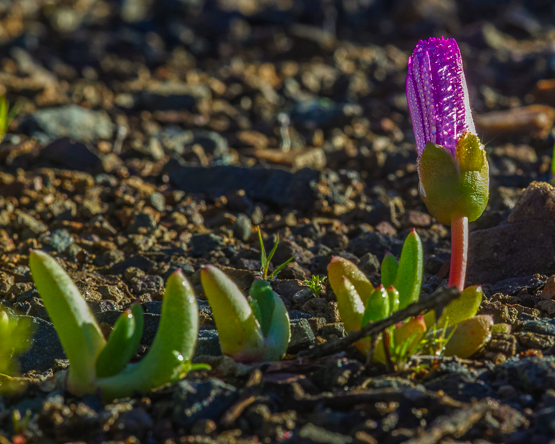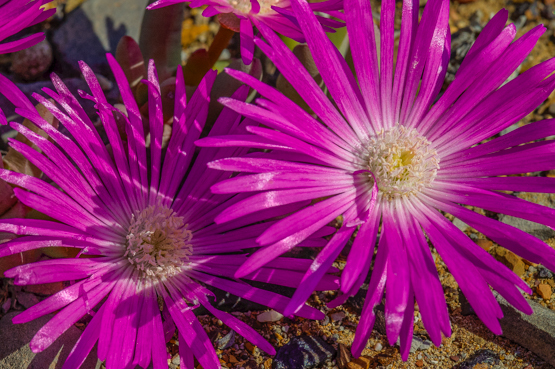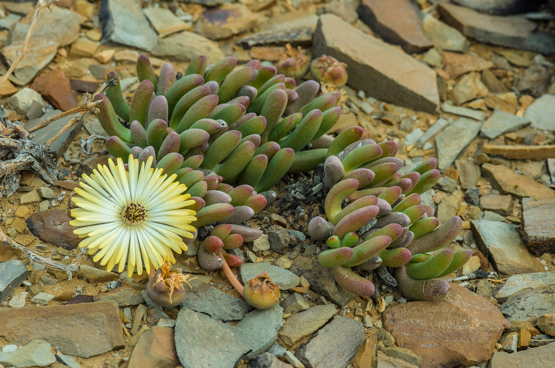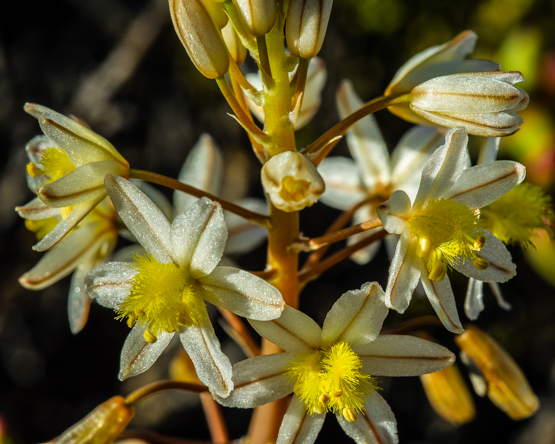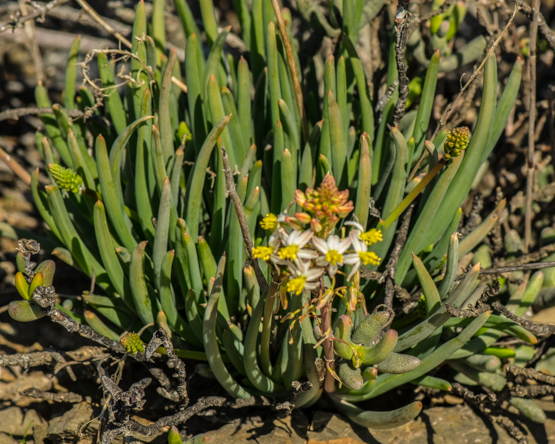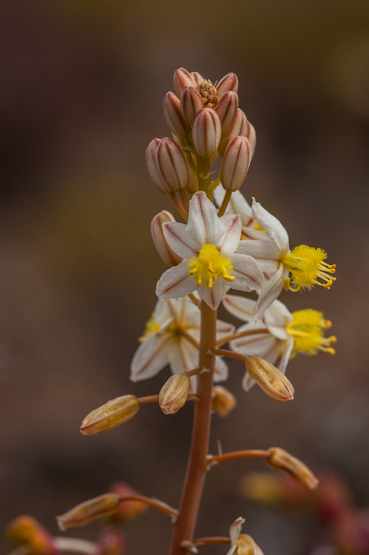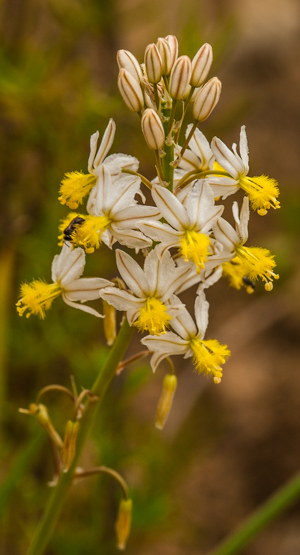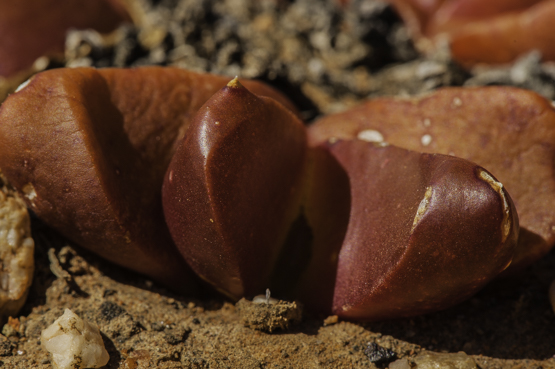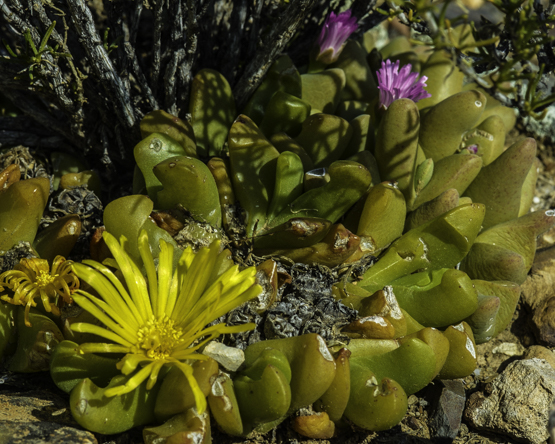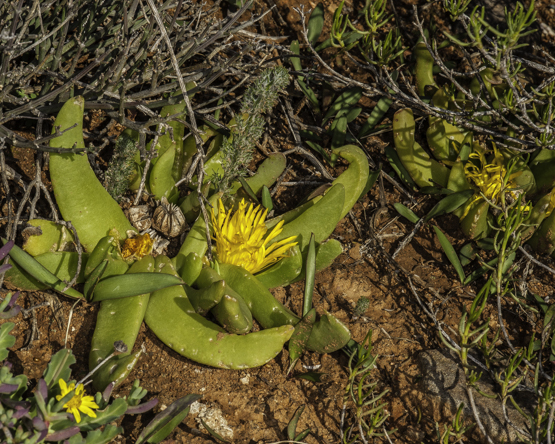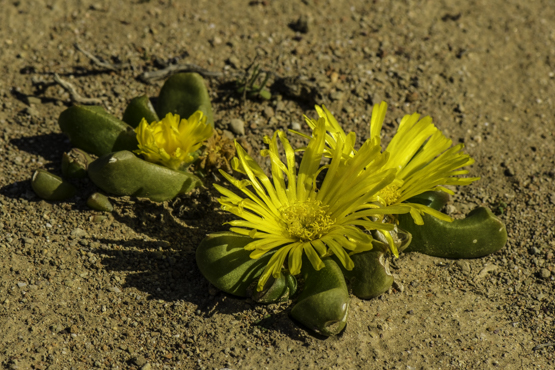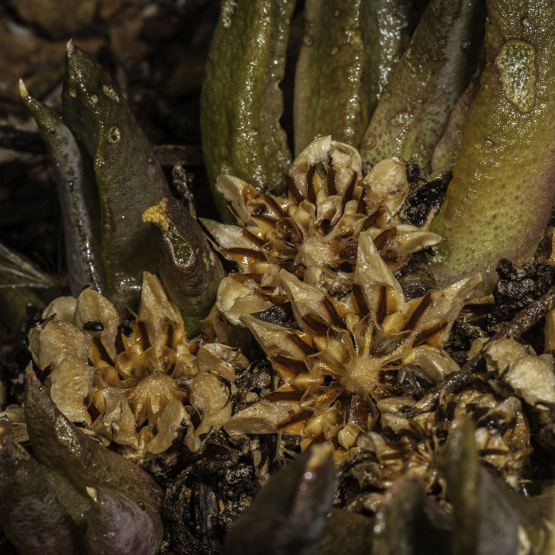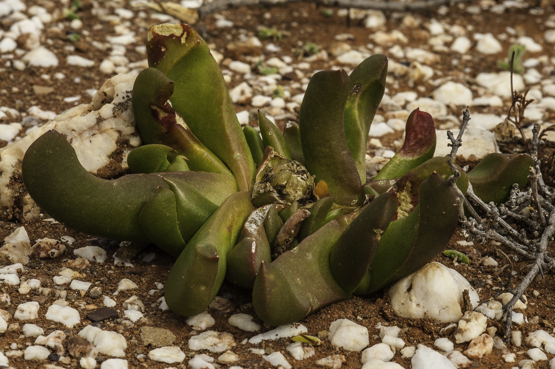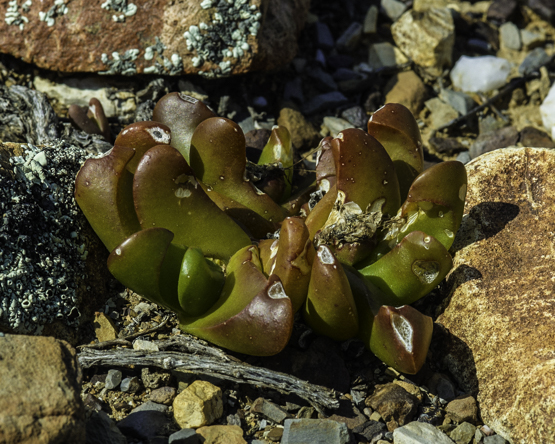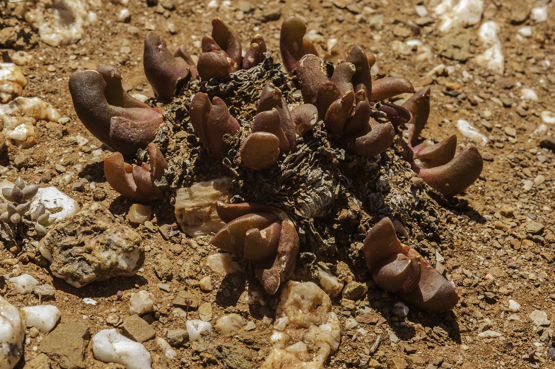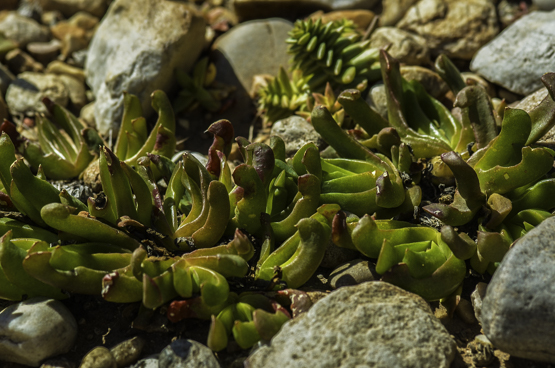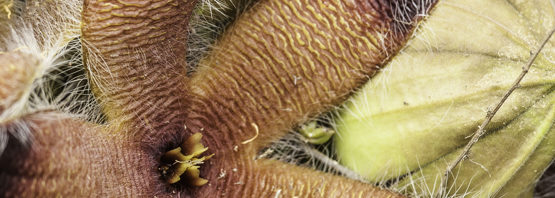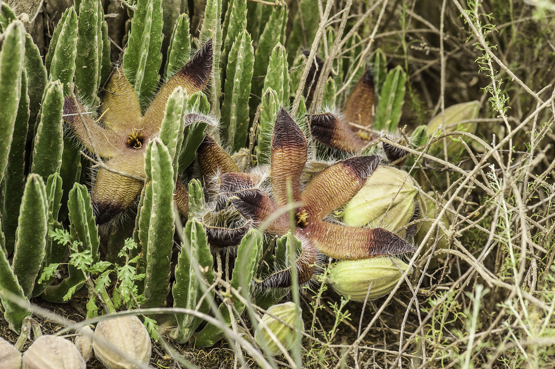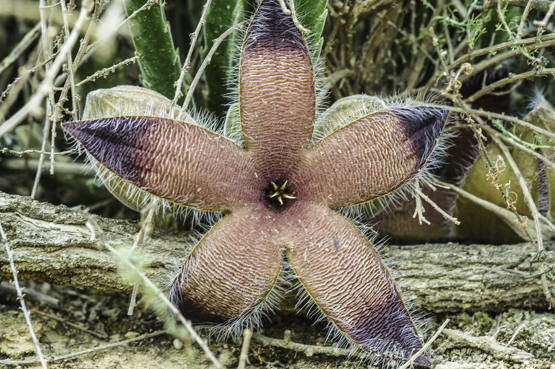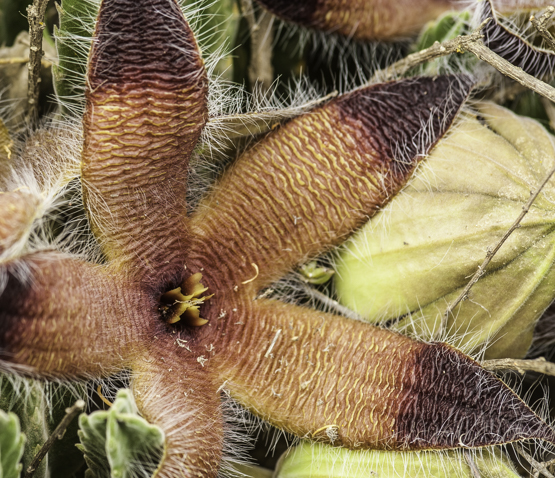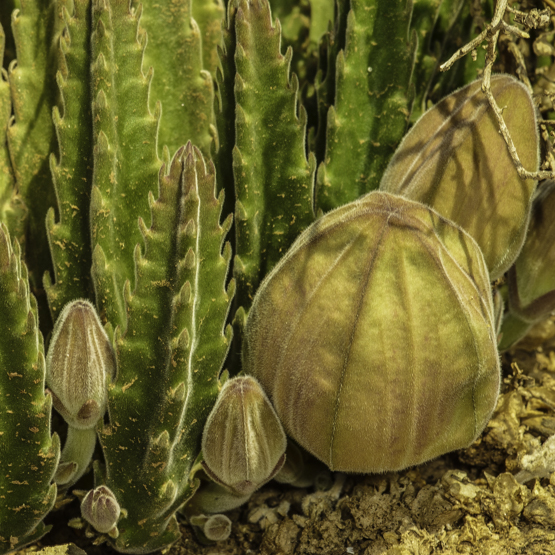Depending on the local conditions these plants are compact or sprawling, often starting life under a shrub.
In spite of the name (“with short leaves”), with a length of 3.5-5 cm the leaves are by no means the shortest in the genus.
The flowers are about 4 cm in diameter and purple with white stamens or (more rarely) cream-coloured with purple-brown stamens; they appear from June though September.
The plants occur from the Cedarberg to the western Little Karoo on open slopes or in dry, open scrub.
This species is probably more variable in flower and growth form than any other Cephalophyllum.
Month: August 2015
Cephalophyllum curtophyllum
Depending on the local conditions these plants are compact or sprawling, often starting life under a shrub.
In spite of the name (“with short leaves”), with a length of 3.5-5 cm the leaves are by no means the shortest in the genus.
The flowers are about 4 cm in diameter and purple with white stamens or (more rarely) cream-coloured with purple-brown stamens; they appear from June though September.
The plants occur from the Cedarberg to the western Little Karoo on open slopes or in dry, open scrub.
This species is probably more variable in flower and growth form than any other Cephalophyllum.
Bulbine triebneri
Until very recently I had never heard or seen this name; it is not even mentioned in the Illustrated Handbook of Succulent Plants (2001). Strangely enough I had seen plants of this species on several occasions, but nobody seemed to know what it was. According to some people it was a white-flowered form of B. frutescens, while others said it had been described “not long ago” as a new species. Searching through the literature did not yield concrete information either.
Ten days ago I was on a fieldtrip with members of CREW, the Custodians of Rare and Endangered Wildflowers (crew@sanbi.org.za). In the plain between Ouberg and Anysberg we came across several specimens of a white-flowered Bulbine and Marion Maclean casually mentioned the name Bulbine triebneri.
After returning home I found out that Ernst van Jaarsveld had described the species in 2001 as B. alba, but that in 2008 the new species was sunk into the older B. triebneri (Bothalia 38,1).
Of the over 70 species of Bulbine this is the only one with white flowers. It differs from its nearest relative, B. frutescens also by the soft, glaucous, more or less round leaves.
Plants are found in the Little Karoo and the southern Great Karoo, where it is locally abundant on shale ridges and scree. The species also occurs in the Eastern and Northern Cape and in southern Namibia.
In the Bothalia article it says: “The most interesting feature of this species is that the
flowers seemingly open only in the very late afternoon for two to three hours at most.”
In spite of this, the first of the pictures shown here was taken at 7.20 AM and the other three between 12.39 and 13.33 PM.
Bulbine triebneri
Until very recently I had never heard or seen this name; it is not even mentioned in the Illustrated Handbook of Succulent Plants (2001). Strangely enough I had seen plants of this species on several occasions, but nobody seemed to know what it was. According to some people it was a white-flowered form of B. frutescens, while others said it had been described “not long ago” as a new species. Searching through the literature did not yield concrete information either.
Ten days ago I was on a fieldtrip with members of CREW, the Custodians of Rare and Endangered Wildflowers (crew@sanbi.org.za). In the plain between Ouberg and Anysberg we came across several specimens of a white-flowered Bulbine and Marion Maclean casually mentioned the name Bulbine triebneri.
After returning home I found out that Ernst van Jaarsveld had described the species in 2001 as B. alba, but that in 2008 the new species was sunk into the older B. triebneri (Bothalia 38,1).
Of the over 70 species of Bulbine this is the only one with white flowers. It differs from its nearest relative, B. frutescens also by the soft, glaucous, more or less round leaves.
Plants are found in the Little Karoo and the southern Great Karoo, where it is locally abundant on shale ridges and scree. The species also occurs in the Eastern and Northern Cape and in southern Namibia.
In the Bothalia article it says: “The most interesting feature of this species is that the
flowers seemingly open only in the very late afternoon for two to three hours at most.”
In spite of this, the first of the pictures shown here was taken at 7.20 AM and the other three between 12.39 and 13.33 PM.
Glottiphyllum depressum (part 2 of 2)
Glottiphyllum depressum (part 1 of 2)
In spite of its name, the leaves of this plant are not always lying flat on the ground. This does not come as a complete surprise in a species which is probably more variable in its leaf characters than any other Glottiphyllum. This variability is reflected in the long list of synonyms. It seems likely that the very wide distribution of this species (compared to its siblings) is at least partly responsible for the wide range of characters.
In each pair, the leaves are slightly different in size (in the seedling state this difference does not exist); they may be up to 8.5 cm long and the tips often have a more or less distinct hook.
As in all other Glottiphyllums (apart from some albinos) the flowers are yellow; they appear in mid winter (July-August).
The plants occur from the southern Ceres Karoo through the Little Karoo to Humansdorp and are often the only Glottiphyllum in the area. They normally grow under shrubs in shaley sandstone or on loamy soils.
The first picture shows no less than 4 species apart from G. depressum:
Antegibbaeum fissoides, Adromischus fiicaulis ssp. marlothii, Crassula tecta and C. congesta ssp. laticephala.
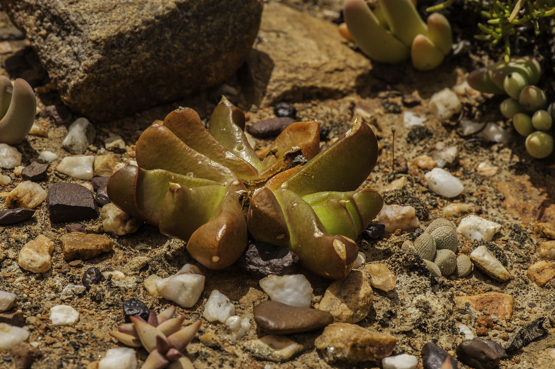
Stapelia grandiflora var. grandiflora
Because they may form large clumps to over a meter in diameter, plants of this species are often quite conspicuous in the field. They occur widespread in the Great Karoo and from Calitzdorp to the Eastern Cape and into the Free State, usually among bushes on lower stony slopes or under trees on flats.
The stems are up to 30 cm long. As the name implies, the flowers are often quite big too (mostly 8-15 cm, but sometimes up to 22 cm in diameter); they are usually silky hairy and appear mainly from March through May. The buds are rounded, which is typical for this variety (see last picture, showing a plant in cultivation).
The first 3 pictures were made near the Calitzdorp Dam, 6 April 2010.
